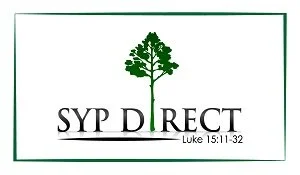Real wood is the Green choice
Antique Reclaimed Heart Pine might cost a fortune unless you buy it NEW! Give us a call and find out about the best substitute for this gorgeous floor.
The problem with Carpet
Most carpet fibers are a form of plastic produced by the petrochemical industry. As these carpet fibers break down in landfills they release methane, one of the most potent greenhouse gasses along with a variety of chemicals unsafe for ground water. What are petrochemicals? In short, they are chemical compounds derived from petroleum and natural gas. Without getting off track, laminate and LVT are a bi-product turned profitable by companies like Dupont and Exxon.
How much carpet is being put into our landfills?
Decomposing carpet holds an impressive and increasing percentage of total landfill tonnage. The E.P.A. estimates that every year, about 5 billion pounds of carpeting go into landfills. That’s 1 to 2 percent of the total U.S. landfill contribution, or 17 pounds of carpeting per person. (Don’t Sweep Carpet’s Eco-Impact Under the Rug - The New York Times (nytimes.com). However, in 2028 laminate will over take carpet and that is not an improvement, unless you are a shareholder.
Real wood is green
LVT = PVC
Plastic by any other name is still PVC
PVC stands for polyvinyl chloride, a versatile and widely used synthetic thermoplastic polymer known for its durability, resistance to chemicals and corrosion, and ability to be made in both rigid and flexible forms.
Ask search is LVT and PVC are same thing?
“PVC (Polyvinyl Chloride) is the base material used to make vinyl flooring, including LVT (Luxury Vinyl Tile), but LVT is a specific type of vinyl flooring.” (June 2025). Well, that is some marketing double talk nonsense. Read it again if necessary but the point is LVT is PVC with pretty colors.
The real problem is not straws
In 2018, in response to a viral video of a plastic straw being removed from a sea turtle’s nose, plastic straws were banned in communities throughout the world. Experts estimate that 500 million single-use plastic straws are used every day, making up a sizable portion of the plastic products thrown away daily. By comparison, in 2024, 5.8 billion square feet of plastic flooring were sold. A little simple math reveals that equates to 15.9 million square feet per day. And since most plastic flooring has a warranty of only 5-10 years, and most cannot be recycled, that translates to a lot of plastic straws. A lot. In fact, just 1,000 square feet of luxury vinyl tile equates to about 570,000 plastic straws. At 15.9 million square feet daily, that equates to more than 9 billion plastic straws each and every day.
What is the difference between prime and rustic grade Caribbean Heart Pine?
The main difference between rustic and prime grade Caribbean Heart Pine flooring is the presence and size of knots and sapwood, which affects the color variation and overall character of the wood.
The main difference between rustic and prime grade Caribbean Heart Pine flooring is the presence and size of knots and sapwood, which affects the color variation and overall character of the wood.
Prime Grade: This grade is more uniform in color, with a range from golden to reddish-brown. It has very few, tiny pin knots and limited sapwood, giving it a more classic and elegant look.
Rustic Grade: This grade features more and larger knots, along with more sapwood. This results in greater color variation and a more distinct "character" or "rustic" appearance, though it's not considered lower quality.
Ford Dealership South Florida
A great substitute for Antique Heart Pine
Caribbean Heart Pine is considered a good substitute for Antique Heart Pine because it has the right characteristics and materials to be "antiqued," meaning a process can be applied to it to create the aged look and feel of reclaimed antique heart pine.
Caribbean Heart Pine floors and ceiling
Unlike our New Heart Pine, the grades are not sorted based on heart content but rather knot frequency and the rustic grade will more color variation and character. The rustic grade will have more frequent knots and the sapwood will generally be within this grade. The select or prime grade will have in frequent knots, a darker color, and a more consistent color range. Tongue and Groove and End Matched One-to-twelve-foot lengths with average 6-8’.





